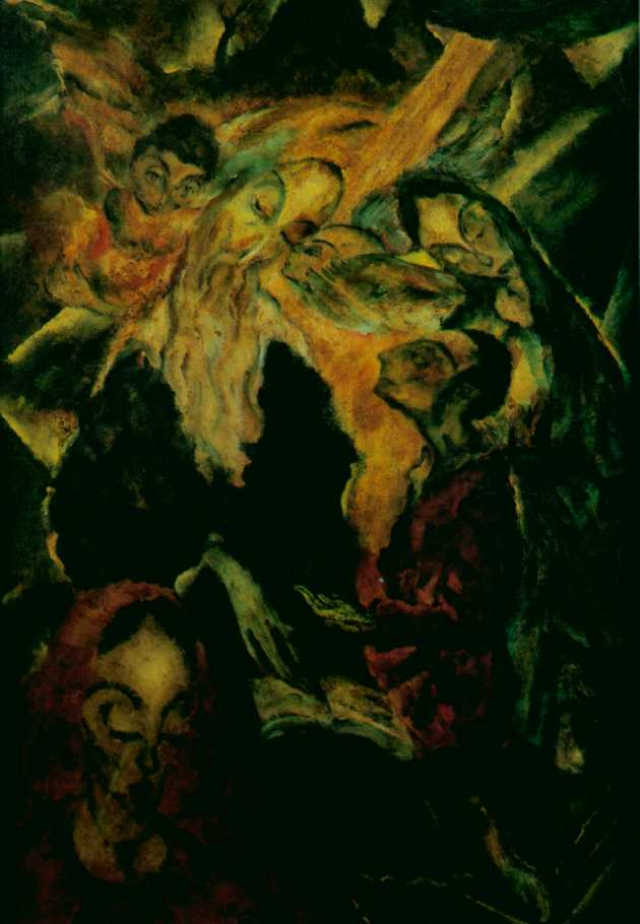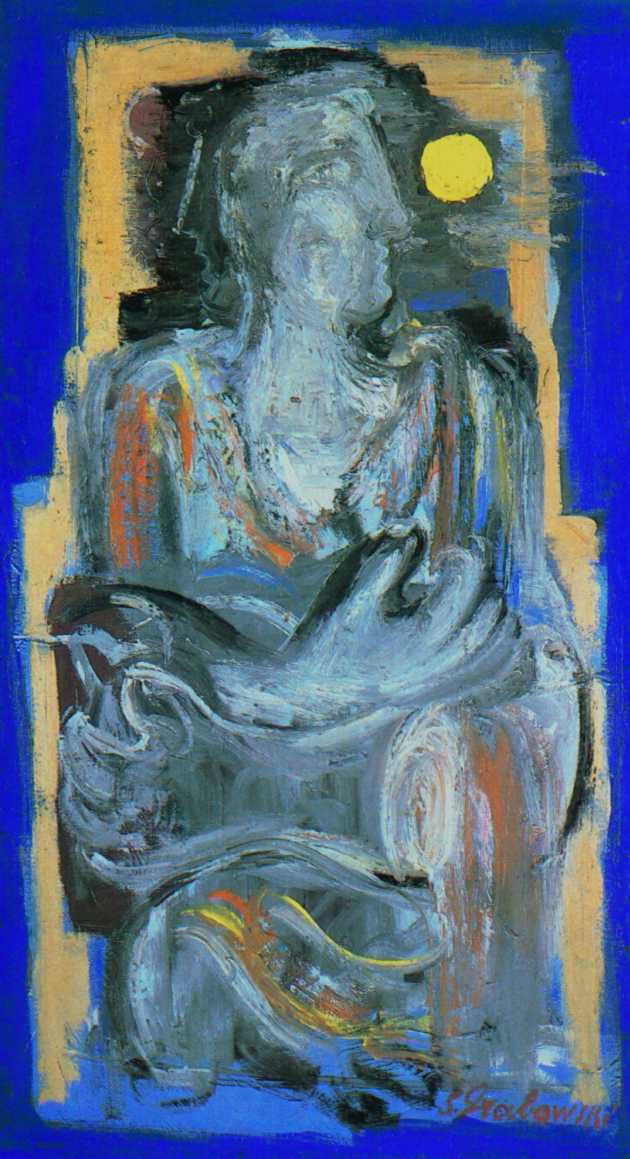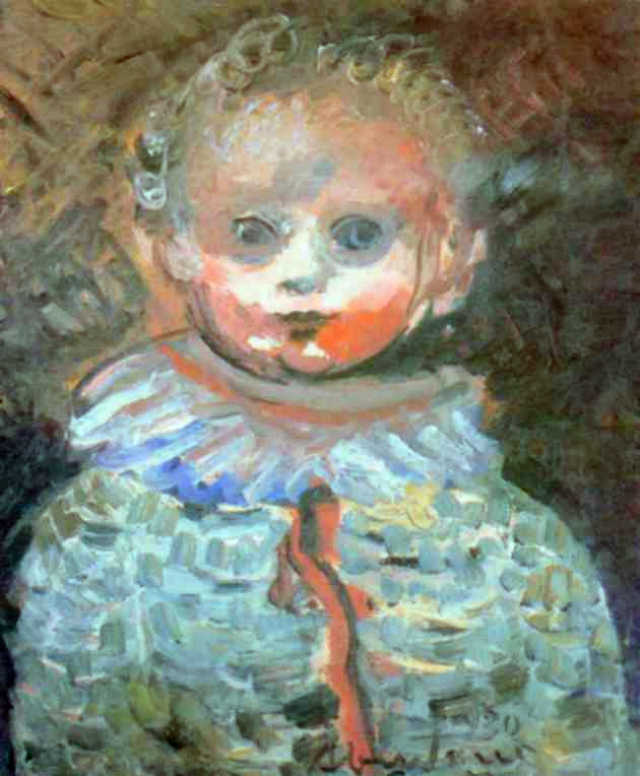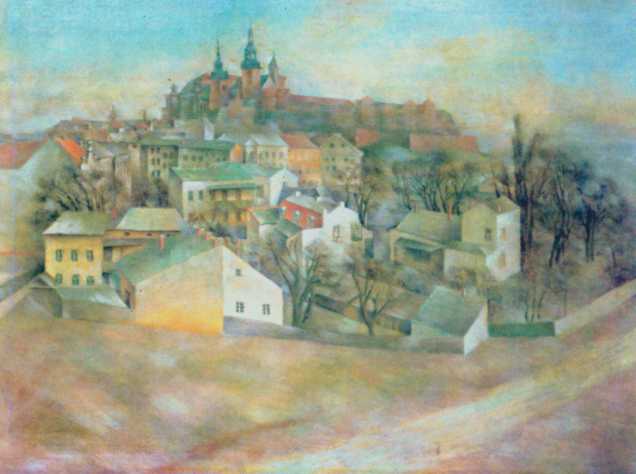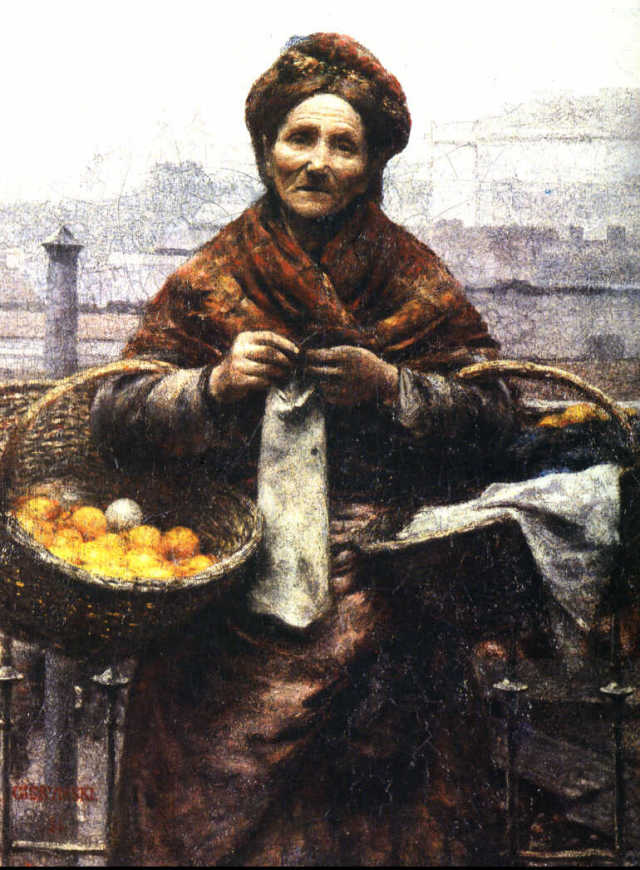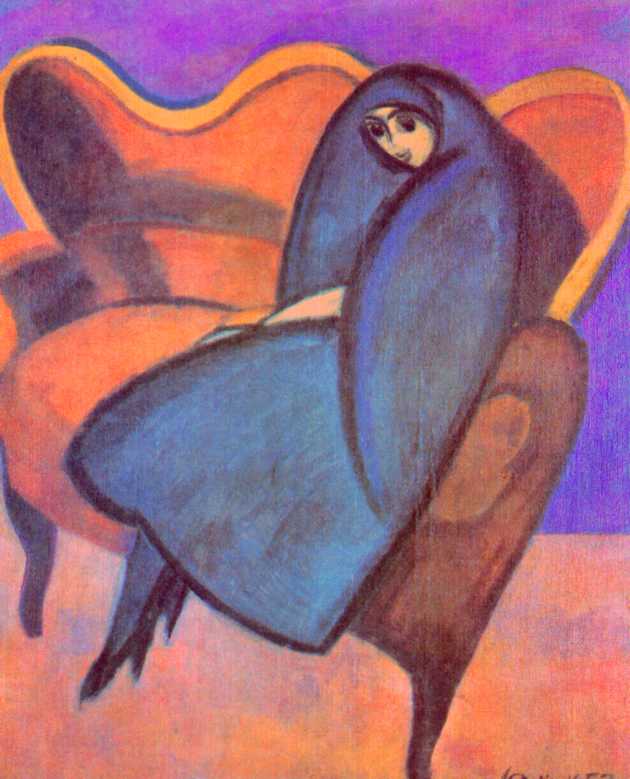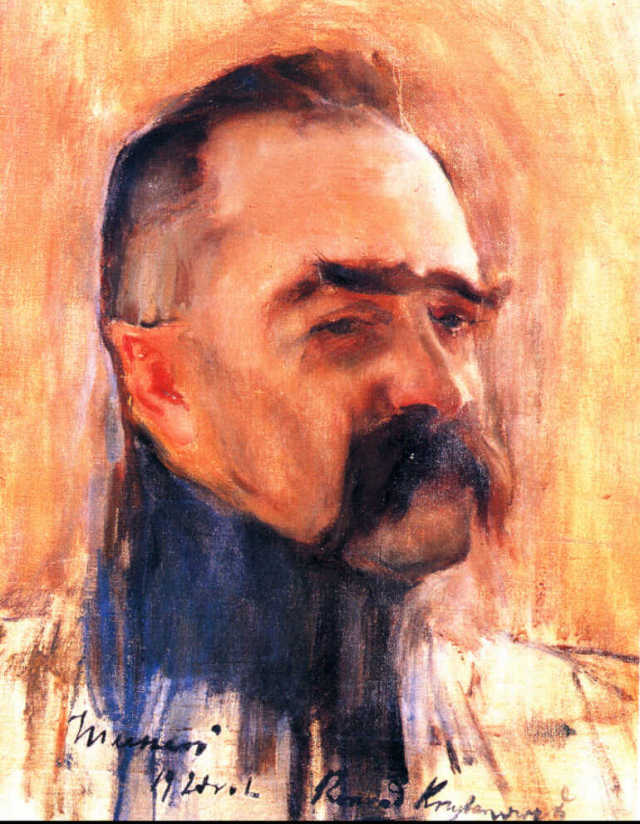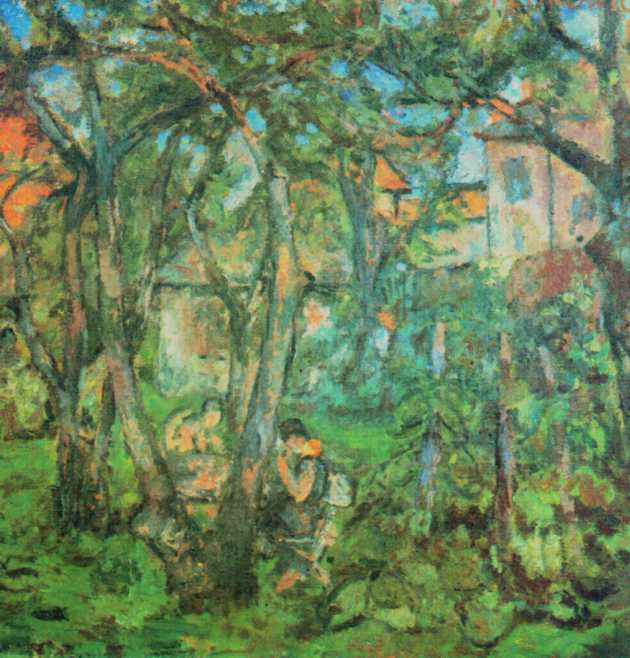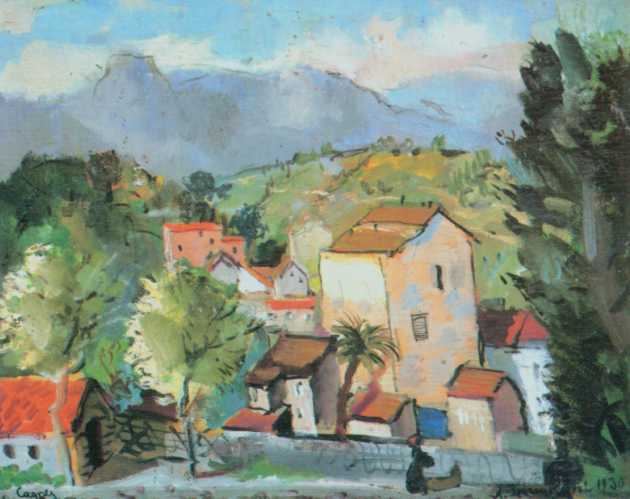Adler, Jankiel (ur. 1895 Tuszyn k. Lodz, zm. 1949 Aldbourne k. London).
Painter, chart. He began his artistic studies in Poland, he continued them in Yugoslavia, and then to 1918 at the Kunstgewerbeschule in Barmen near Dusseldorf. Lata 1918-20 spent in Warsaw, working simultaneously with the Lodz group of Jewish painters and poets Jung Idysz. W 1920 he went to Germany, where he settled in Dusseldorf. In years 1924-30 he also traveled to France and Spain. 1V 1931 made an acquaintance with Paul Klee at the Kunstakademie in Dusseldorf. W 1933 he left Germany and went to Paris. Lata 1935-36 spent in Poland. W 1935 had his first major exhibition in Warsaw, presenting all his achievements to date. W l. 1936-37 he traveled to Italy, Yugoslavia, Czechoslovakia, Romania and the USSR. W l. 1937-38 he lived in Paris, later in Cagnes-sur-Mer. W 1940 he joined the Polish army in France and that year he joined Polish troops in Scotland. Demobilized in 1941 lives in Kirkcudbright, then in London and Aldbourne. The art of Klee had a significant impact on Adler's work, Picassa i Wiethiichtera. He practiced oil painting, drawing, watercolor. The subject of his works is Jewish folklore, biblical-Talmudic threads, instruments and animals themes, abstract-surreal compositions (temporarily in the 1930s) and in the recent period of war experiences. Adler's paintings are characterized by a fascinating texture, the expressive violence of the composition, often monumental, and a brilliant interpretation of color, under these external elements of painting they hide the true drama of life: nostalgia, pessimism, sense of the inevitability of destiny.
Painter, chart. He began his artistic studies in Poland, he continued them in Yugoslavia, and then to 1918 at the Kunstgewerbeschule in Barmen near Dusseldorf. Lata 1918-20 spent in Warsaw, working simultaneously with the Lodz group of Jewish painters and poets Jung Idysz. W 1920 he went to Germany, where he settled in Dusseldorf. In years 1924-30 he also traveled to France and Spain. 1V 1931 made an acquaintance with Paul Klee at the Kunstakademie in Dusseldorf. W 1933 he left Germany and went to Paris. Lata 1935-36 spent in Poland. W 1935 had his first major exhibition in Warsaw, presenting all his achievements to date. W l. 1936-37 he traveled to Italy, Yugoslavia, Czechoslovakia, Romania and the USSR. W l. 1937-38 he lived in Paris, later in Cagnes-sur-Mer. W 1940 he joined the Polish army in France and that year he joined Polish troops in Scotland. Demobilized in 1941 lives in Kirkcudbright, then in London and Aldbourne. The art of Klee had a significant impact on Adler's work, Picassa i Wiethiichtera. He practiced oil painting, drawing, watercolor. The subject of his works is Jewish folklore, biblical-Talmudic threads, instruments and animals themes, abstract-surreal compositions (temporarily in the 1930s) and in the recent period of war experiences. Adler's paintings are characterized by a fascinating texture, the expressive violence of the composition, often monumental, and a brilliant interpretation of color, under these external elements of painting they hide the true drama of life: nostalgia, pessimism, sense of the inevitability of destiny.
My parents, 1921
oil, plate, 136 x 54 cm;
signed lower right: Adler 21;
Museum of Art in Łódź;
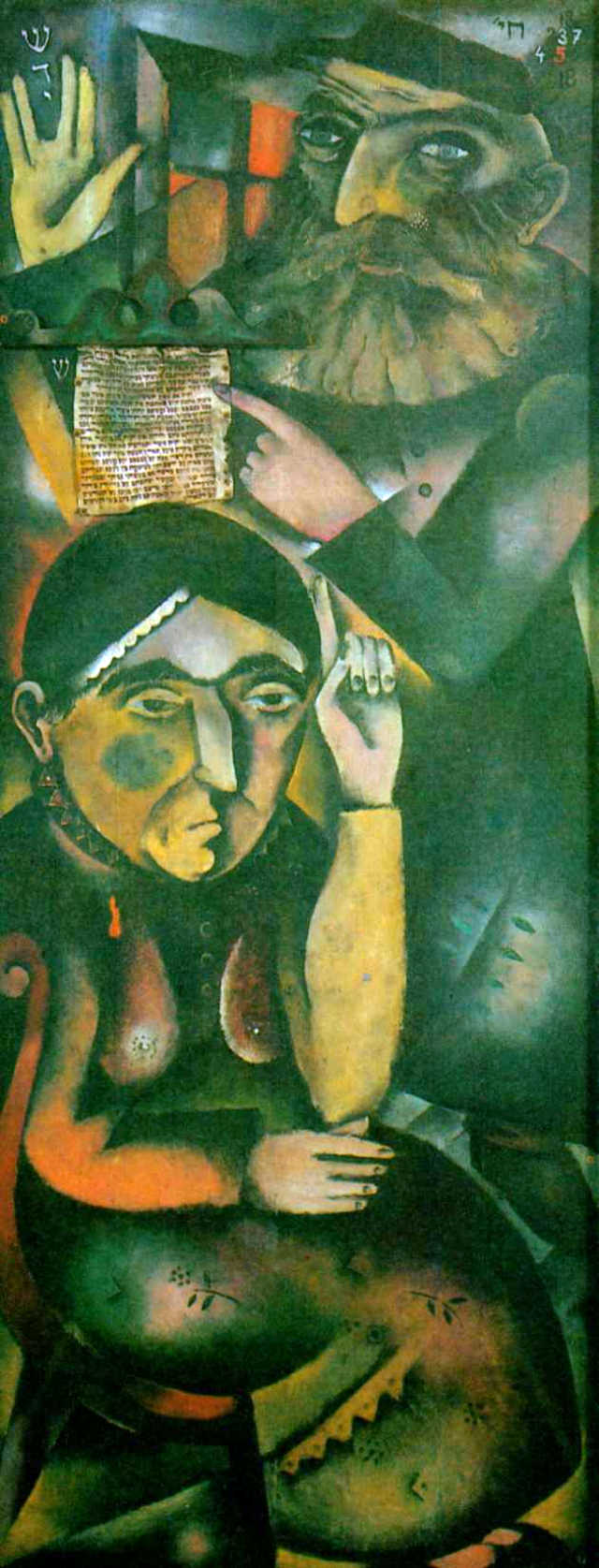
oil, plate, 136 x 54 cm;
signed lower right: Adler 21;
Museum of Art in Łódź;

Rabi's last hour, ok. 1920
oil, cardboard, 100 x 70 cm;
Museum of Art in Łódź;
oil, cardboard, 100 x 70 cm;
Museum of Art in Łódź;
